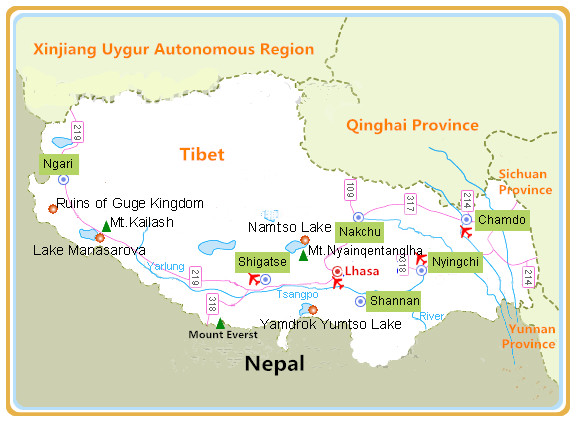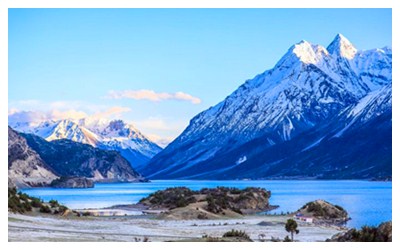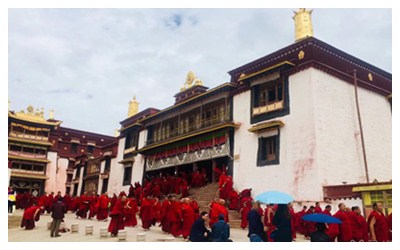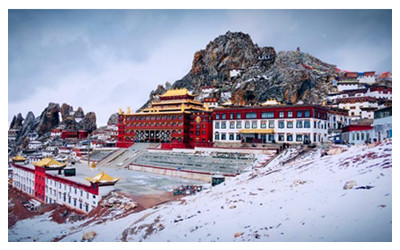Skype: neodalle-travel
Tel: +86 135 7447 2266
E-mail: sales@visitaroundchina.com

 |
 |
 |
| Ranwu Lake | Galden Jampaling Monastery | Zezhol Monastery |
When to visit Chamdo?
Chamdo Prefecture has a continental plateau climate characterized by low temperatures. It has two distinct seasons, a rainy season from May to September and a dry season from October to April. Its weather varies greatly due to the complex geography. For example, its southeast region is warmer and wetter than the north and northwest. It enjoys strong sunshine and the daylight hours are long. The temperature differs greatly between day and night. It may be rainy at night in summer and windy in winter and spring. The annual average temperature here falls around 7.6ºC.
Places not far from the Chamdo Bangda Airport can be visited throughout the year. Land routes to other regions are usually blocked by heavy snow from November to March. It is not convenient to travel the region in July and August due to frequent rainfall. Flooding and landslides sometimes occur. Briefly, May, June and September are the most suitable to pay a visit.
How to reach Chamdo?
By air: , Chamdo Bangda Airport,located in the Bangda Grassland, is the world's highest airport and has the longest runway. It is 136 kilometers (84.5 miles) from Chamdo County. As the first lateral airport in Tibet, Chamdo Bangda Airport started to be built in 1993 and finished in October, 1994. At present, it has air routes to/from domestic cities including Beijing, Chengdu, Chongqing, Lhasa, Tianjin, Xi'an, and Xining; meanwhile, flights to/from Nepal are also operated at this airport. Passengers can take airport shuttle bus to Chamdo County from the airport. The duration is 3 hours. The ticket fare is CNY 60 per person.
Chamdo Bangda Airport
Add:in the Bangda Grassland,Chamdo City,Tibet
Tel: +86 0895-4821004.
By Bus: Chamdo Prefecture is over 1,200 kilometers from Chengdu and over 1,100 kilometers from Lhasa. Every week at least three buses travel between Chamdo and the two cities. Apart from regular buses, the tourist bureau sometimes sends special buses to Lhasa for visitors. They do not drive at night, so the whole journey may take five or six days. For individual tourists, hiring passing cars, mostly freight cars, is the best choice. These cars usually pick up passengers at the bus station in Chengguan Town in Chamdo County, and visitors can negotiate the details with the drivers.
Chamdo Travel Tips
Special Local Products: chang, rare herbs, Tibetan boots and knives, silver objects and decorations
Local Highlights: Almost every month Chando has festivals with different themes, and some of the traditions have been passed down for many generations. The Tibetan New Year is the most important and ceremonious traditional festival of the Tibetans. New Year's Day (the first day of the first month) of the Tibetan calendar is usually in February. During the fifth and the sixth months of the Tibetan calendar, a horse racing festival is held among the locals. In addition, monasteries hold religious festivals such as the Butter Lamp Festival in the first Tibetan month and the Saga Dawa Festival in the fourth Tibetan month. During these festivals devotees perform magnificent rituals and supplications.
 Ask Questions ?
Ask Questions ?